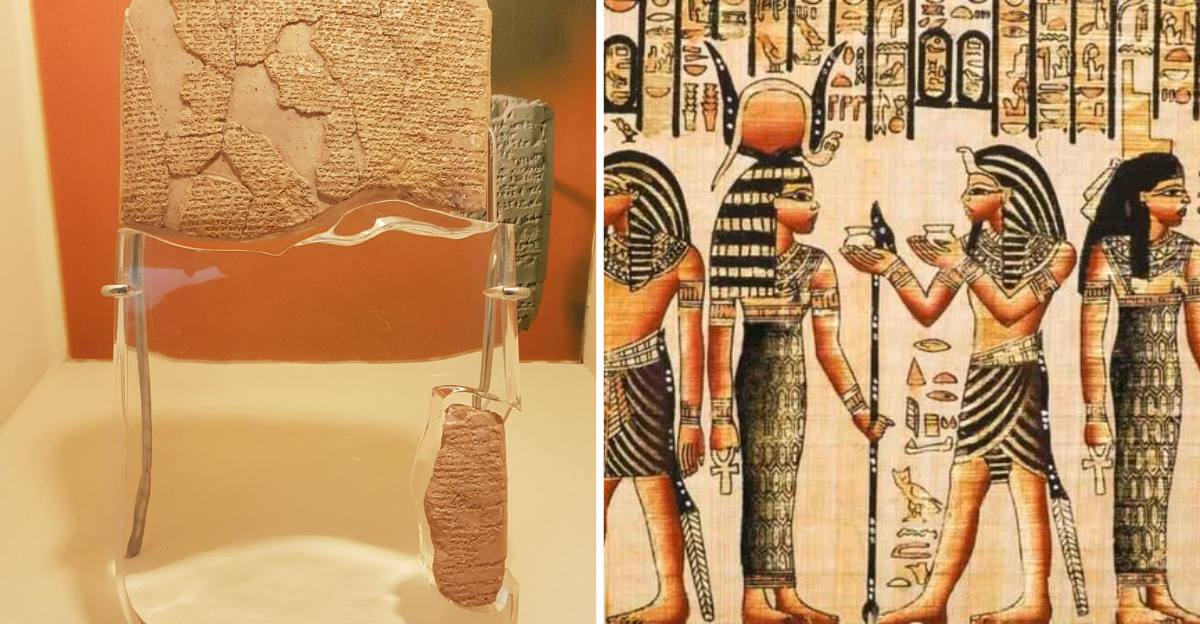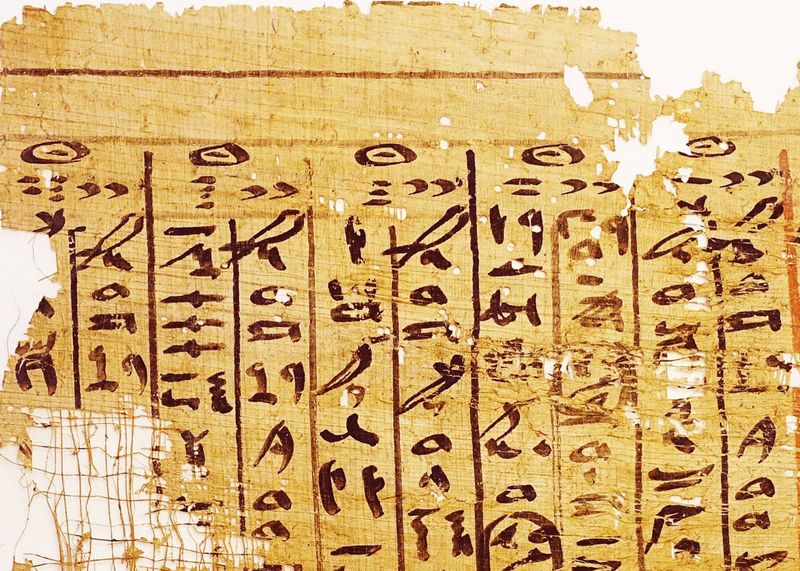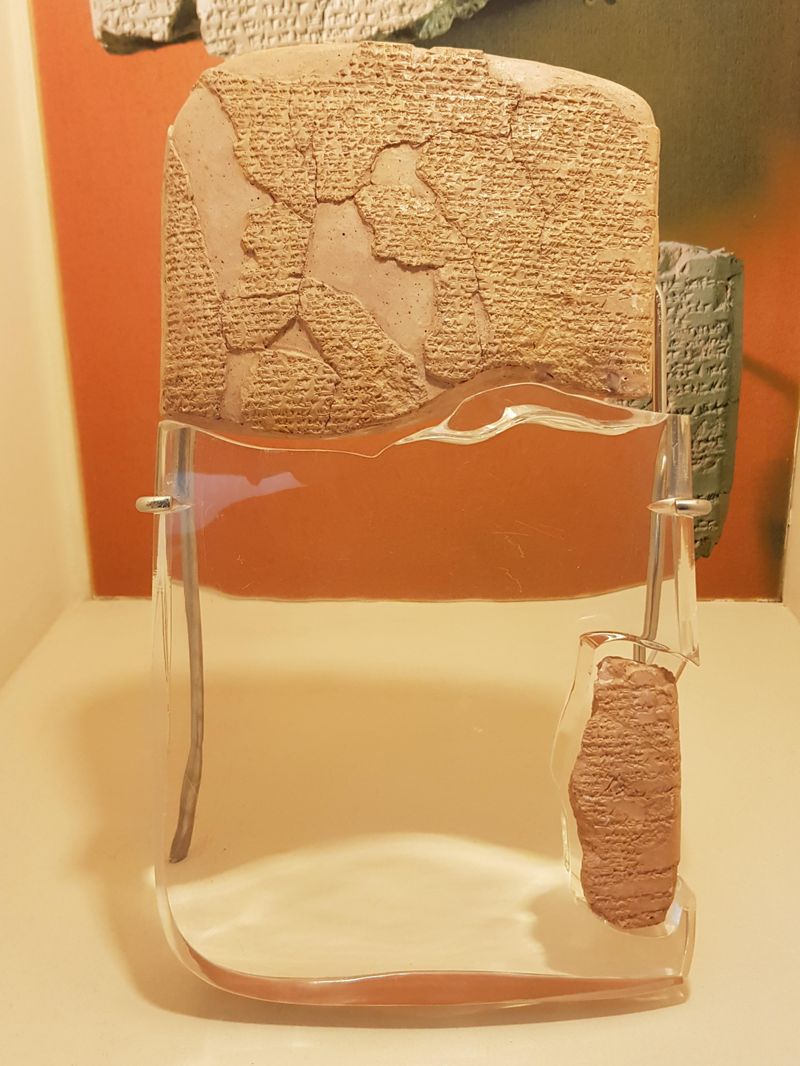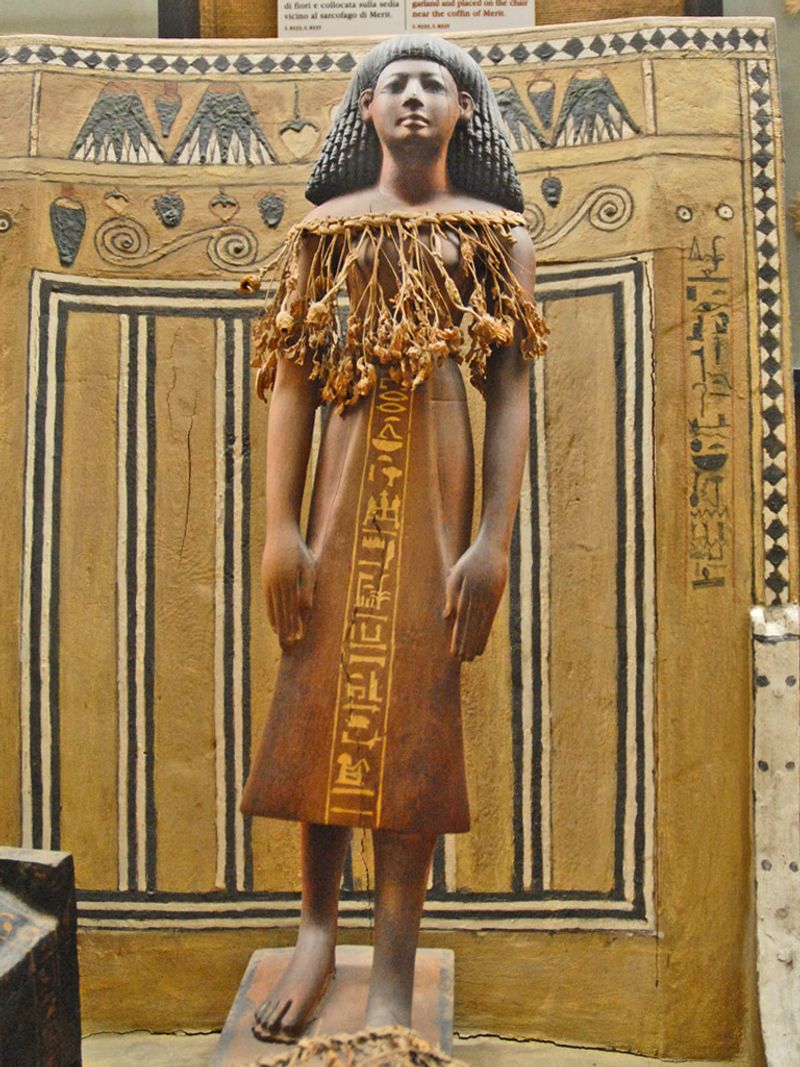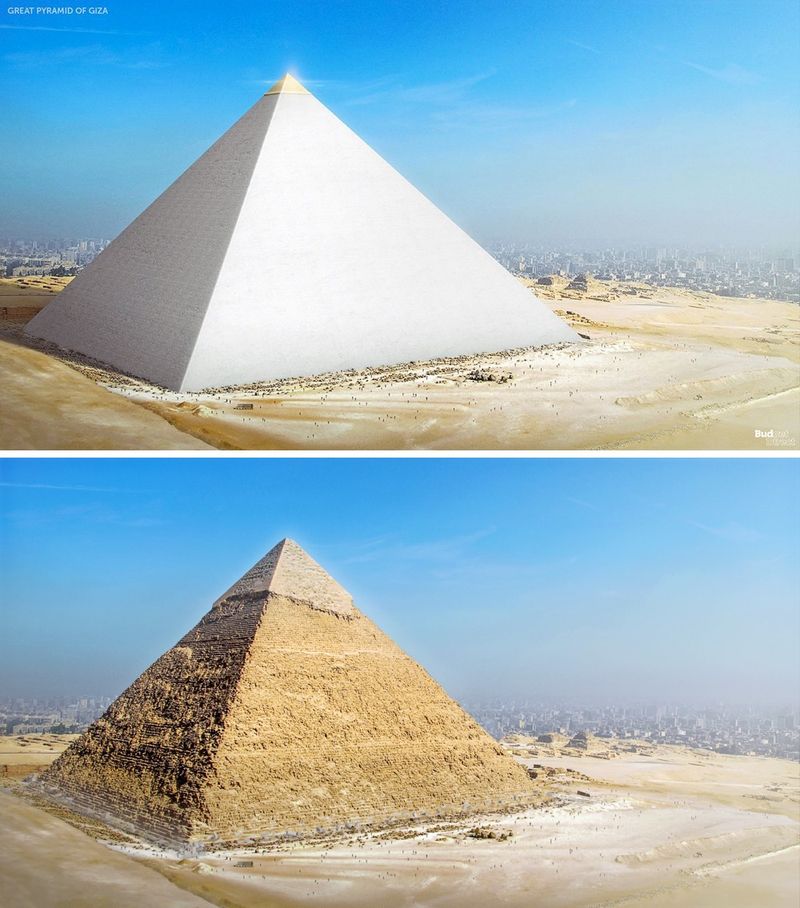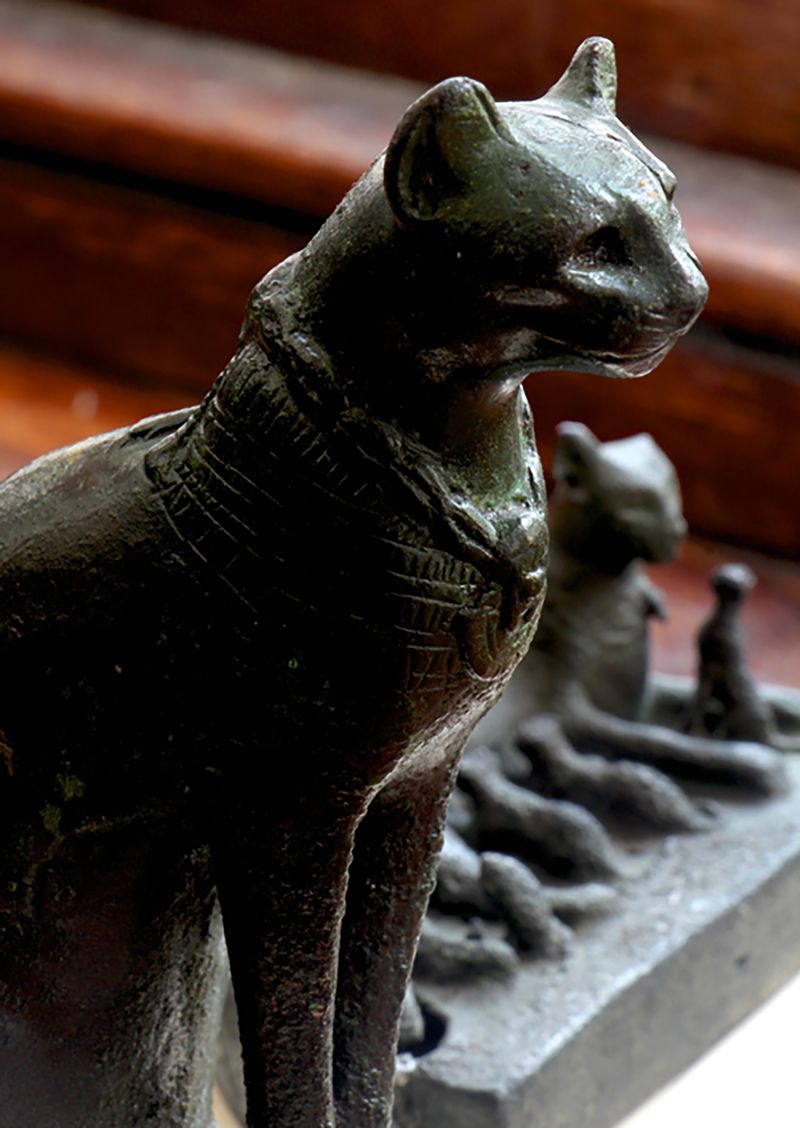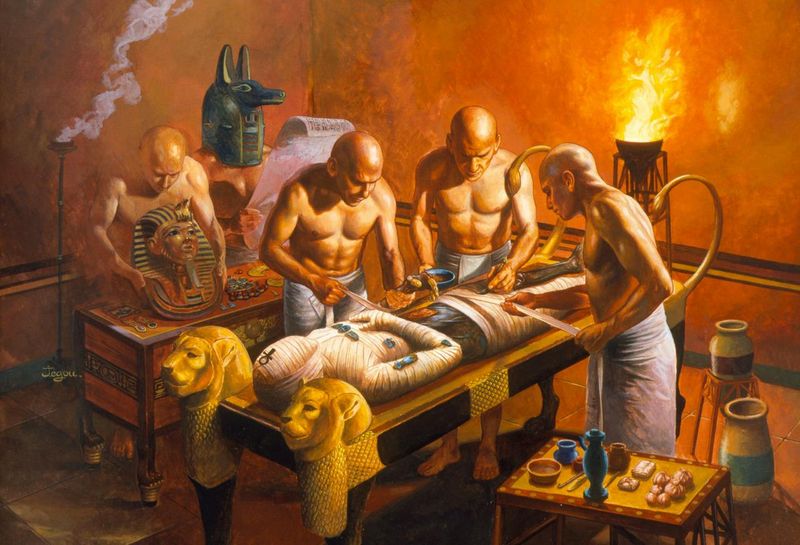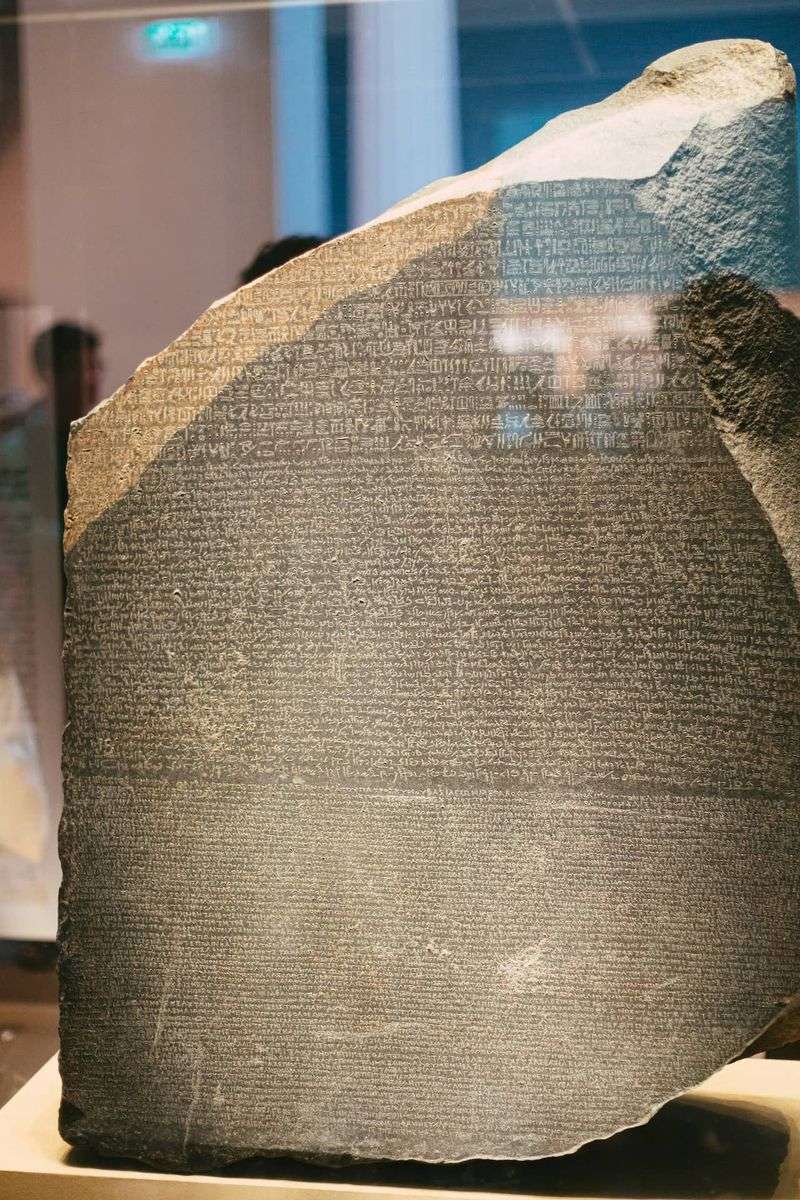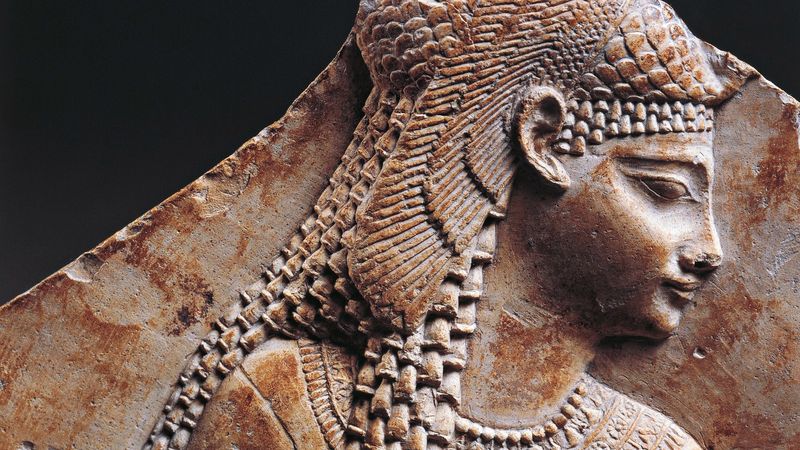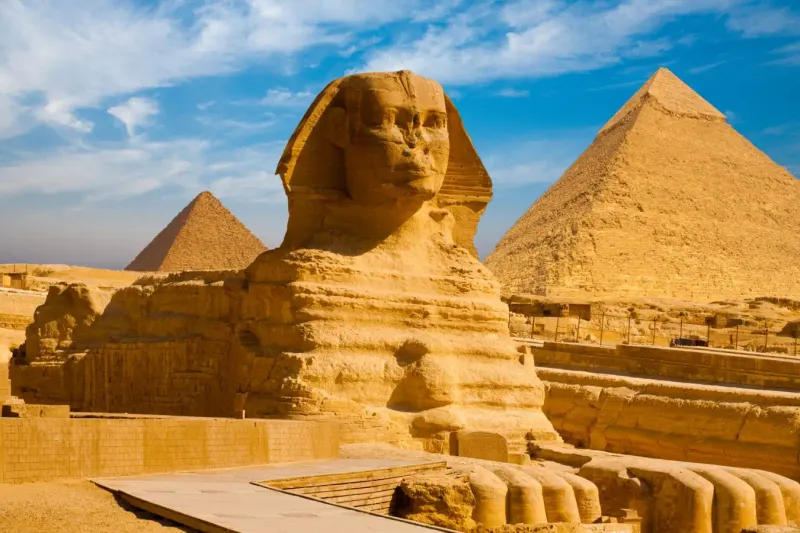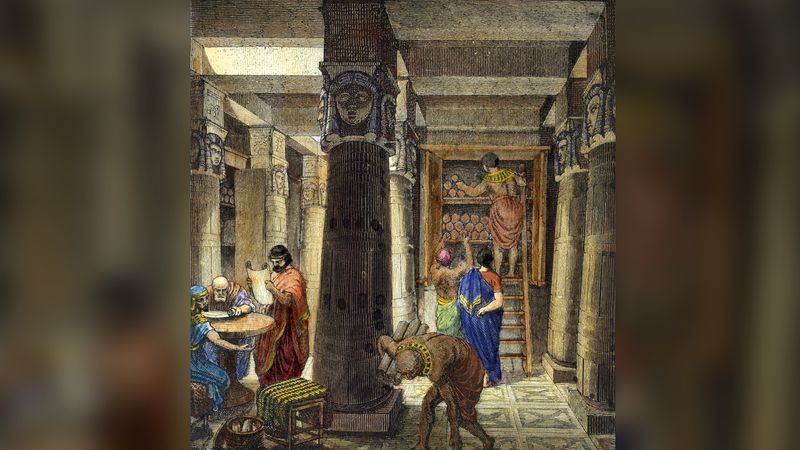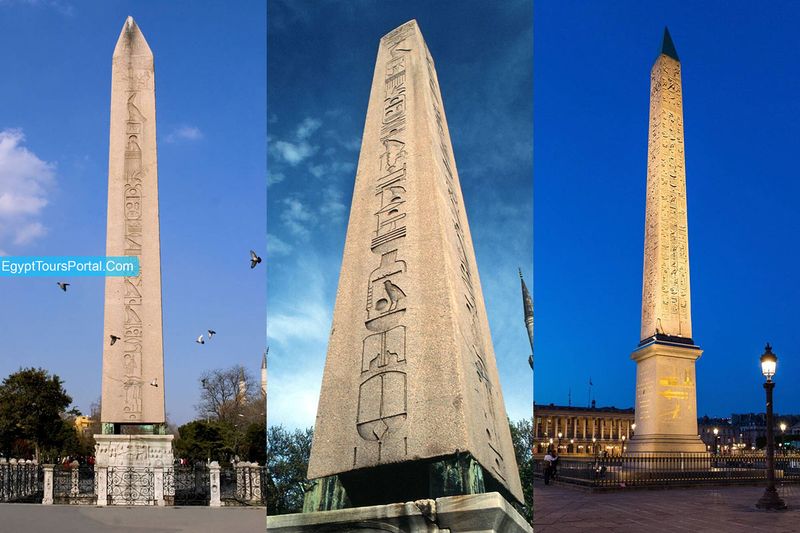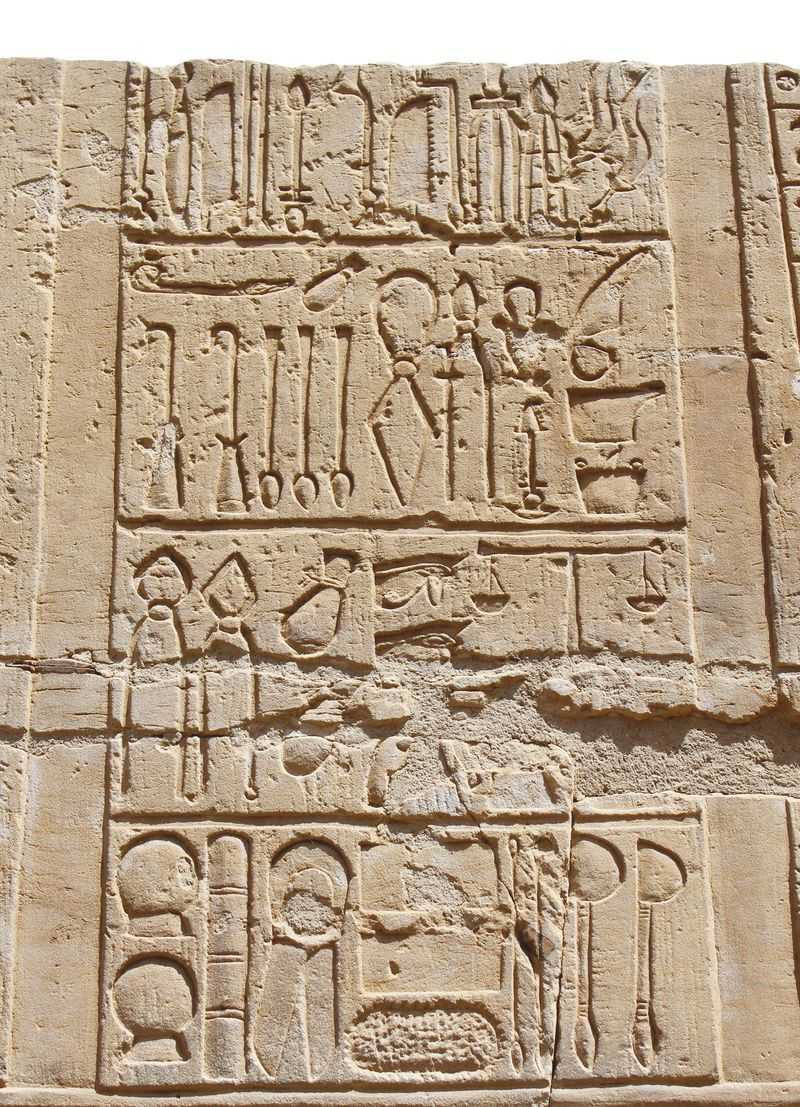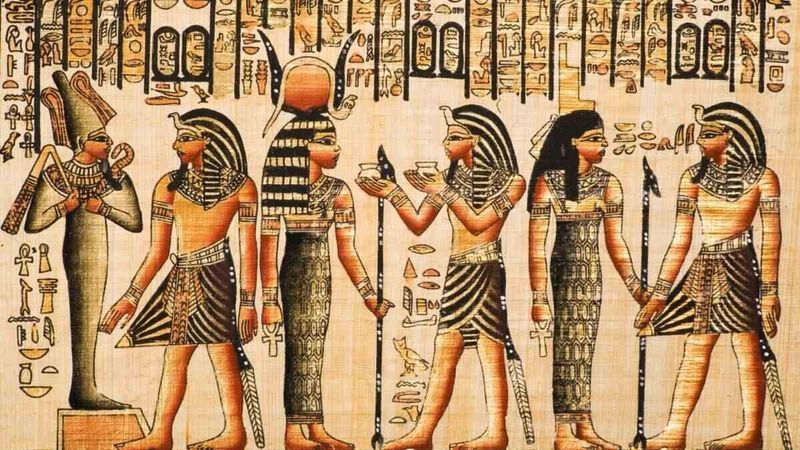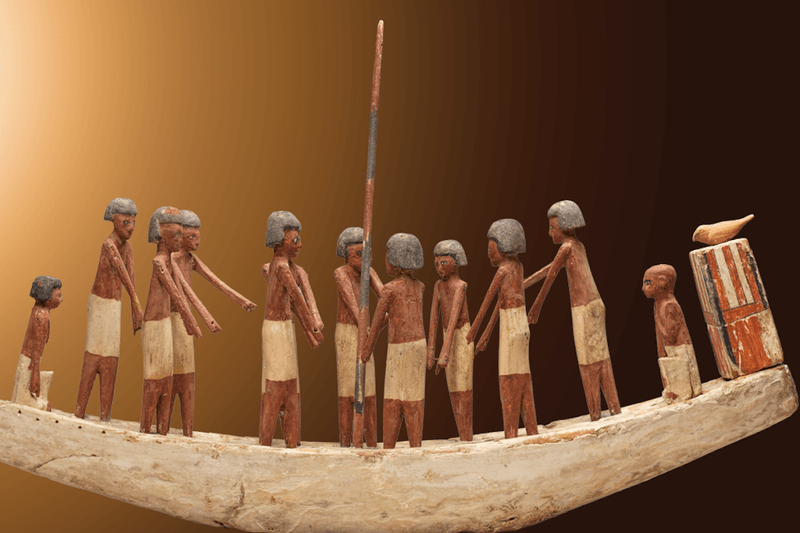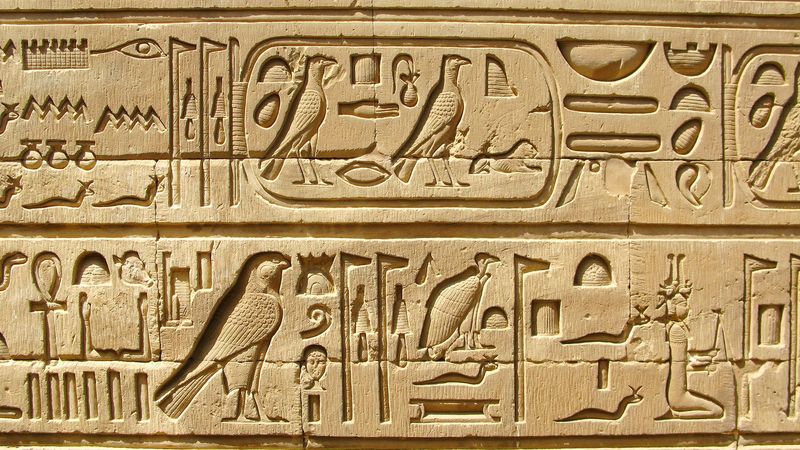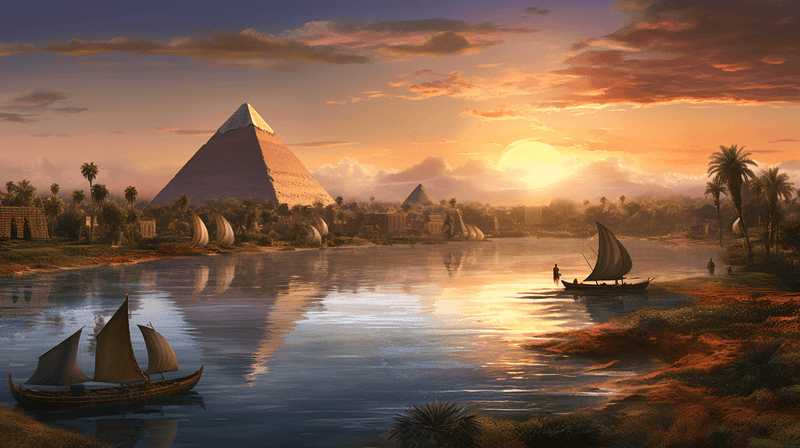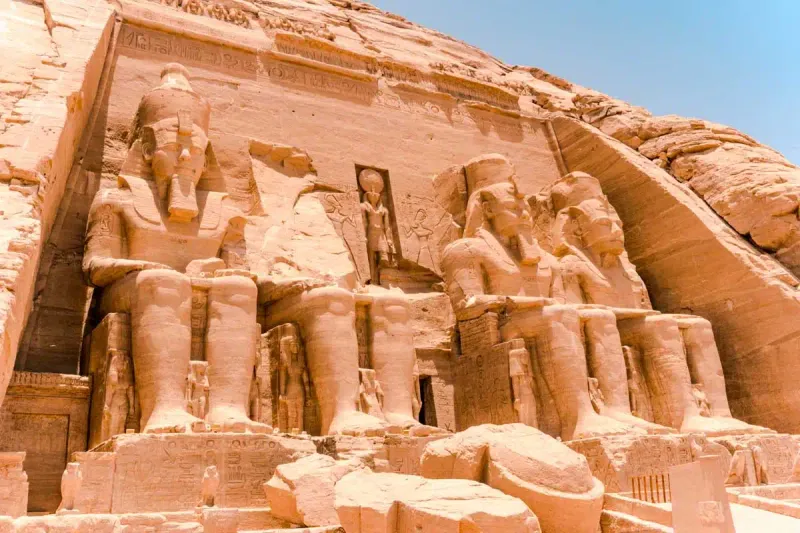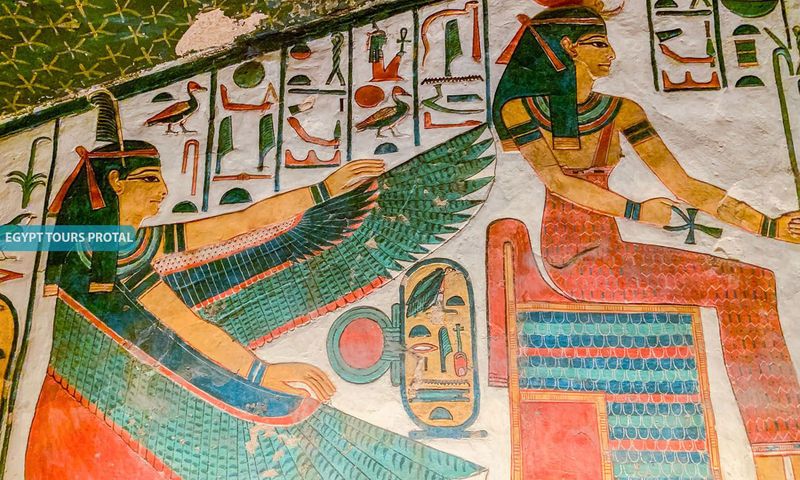Ancient Egypt, a land of mystery and allure, has captivated historians and enthusiasts alike for centuries. Its vast contributions to human civilization and rich cultural tapestry continue to fascinate us. Here, we explore twenty intriguing and lesser-known facts about this mesmerizing civilization that shaped history.
The Inventors of Papyrus
Papyrus, an ancient writing material, was one of Egypt’s most significant contributions to civilization. Made from the pith of the papyrus plant, it was a precursor to modern paper. The process of making papyrus involved cutting thin strips from the plant’s pith, soaking them, and then pressing them into sheets. These sheets were used for recording vital cultural, religious, and administrative information. Papyrus was crucial for the documentation of ancient Egyptian knowledge, allowing it to be preserved and shared. This innovation underscores Egypt’s pivotal role in the development of written communication and record-keeping.
The World’s First Known Peace Treaty
Egypt and the Hittite Empire signed what is known as the world’s first recorded peace treaty. This historic agreement was forged after the Battle of Kadesh around 1259 BCE. The treaty ended years of conflict and is a testament to Egypt’s diplomatic acumen. Details of this treaty were etched into temples, highlighting its significance. The agreement not only secured peace but also established a framework for diplomatic relations and mutual cooperation. It stands as an early example of international diplomacy and heralds Egypt as a leader in peaceful conflict resolution, a legacy that echoes through history.
Women Had Unusual Rights
In ancient Egypt, women enjoyed rights and freedoms that were uncommon in other ancient societies. They could own, inherit, and will property, engage in legal contracts, and even initiate divorce. Egyptian women could work as merchants, priestesses, and even hold positions of power like pharaoh. Such rights highlight the progressive and inclusive nature of ancient Egyptian society, offering a contrast to the often patriarchal norms of the time. This empowered status afforded to women is a fascinating aspect of Egyptian culture, revealing a society that valued the contributions and autonomy of all its members.
Pyramids Were Not Built by Slaves
Contrary to popular belief, the pyramids were not built by slaves. Archaeological evidence suggests that the workforce consisted of skilled laborers who took pride in their work. These laborers were well-fed and housed in nearby communities. They worked in rotating shifts, demonstrating a sophisticated understanding of labor management. This revelation challenges the stereotype of ancient civilizations relying solely on forced labor. Instead, it highlights the Egyptians’ organizational skills and their ability to mobilize a motivated workforce. Such insights provide a more nuanced understanding of how these iconic structures came to be.
Cats Were Sacred Animals
In ancient Egypt, cats were venerated and considered sacred animals. They were closely associated with the goddess Bastet, a protective deity. Cats were believed to bring good fortune and were often depicted in art and mythology. The Egyptians’ reverence for cats extended to laws that protected them, and harming a cat was considered a serious crime. This cultural significance underscores the unique place cats held in Egyptian society, reflecting their admiration for the animal’s grace and hunting prowess. This lasting bond between humans and cats continues to influence how these animals are perceived today.
Mummification Was a Lengthy Process
The intricate process of mummification was vital for ensuring a successful journey to the afterlife. It began with the removal of internal organs, which were preserved separately. The body was then dehydrated using natron salts before being wrapped in linen. This elaborate ritual could take up to 70 days, reflecting the Egyptians’ deep belief in life after death. Mummification was not only reserved for pharaohs but was also accessible to those who could afford it. This meticulous preservation highlights the Egyptians’ commitment to eternal life and their profound spiritual and religious beliefs.
The Rosetta Stone Was a Linguistic Breakthrough
The Rosetta Stone was instrumental in deciphering ancient Egyptian hieroglyphics. Discovered in 1799, it features a decree written in three scripts: Greek, Demotic, and Hieroglyphic. This parallel text allowed scholars, led by Jean-François Champollion, to unlock the meaning of hieroglyphics. The stone’s discovery revolutionized our understanding of ancient Egyptian language and culture. It serves as a symbol of linguistic achievement and highlights the importance of cross-cultural exchanges in preserving history. The Rosetta Stone continues to be a key artifact in the study of Egyptology, bridging the gap between modern and ancient worlds.
Cleopatra Was Not Egyptian
Cleopatra VII, the last active pharaoh of Egypt, was of Macedonian Greek descent, not ethnically Egyptian. She belonged to the Ptolemaic dynasty, which ruled Egypt following Alexander the Great’s conquest. Cleopatra was renowned for her intelligence and political acumen. Fluent in several languages, she embraced Egyptian culture and identified herself with the goddess Isis. Her reign was marked by a strategic alliance with Rome, navigating the complex political landscape of her time. Cleopatra’s unique heritage and enduring legacy continue to intrigue historians and popular culture, making her one of antiquity’s most charismatic figures.
The Great Sphinx Has a Mystery of Its Own
The Great Sphinx of Giza is one of Egypt’s most iconic monuments, yet its origins remain shrouded in mystery. Believed to have been constructed during the reign of Pharaoh Khafre, its purpose is still debated by scholars. The Sphinx features a lion’s body and a human face, possibly representing the pharaoh himself. Over time, the monument has suffered from erosion and damage, sparking numerous restoration efforts. The Sphinx’s enigmatic aura continues to captivate researchers and visitors alike, embodying the mystique and grandeur of ancient Egypt. Its enduring presence remains a testament to Egypt’s architectural ingenuity.
The Library of Alexandria Was a Center of Knowledge
The Library of Alexandria was one of the ancient world’s most significant repositories of knowledge. Established in the 3rd century BCE, it attracted scholars from across the world. The library housed hundreds of thousands of scrolls, covering various fields of study. It was a hub for intellectual exchange and innovation. Despite its eventual destruction, the library’s legacy endures as a symbol of learning and cultural advancement. Its existence underscores ancient Egypt’s role as a beacon of scholarship and enlightenment. The Library of Alexandria continues to inspire modern centers of learning and intellectual pursuit around the globe.
Obelisks Were Monumental Achievements
Obelisks are towering stone pillars that symbolized the sun god Ra and were believed to act as a bridge between the heavens and earth. These monumental structures required complex engineering and laborious craftsmanship. Obelisks were typically erected at temple entrances, serving as symbols of power and divine connection. The process of quarrying, transporting, and erecting these massive stones showcases the Egyptians’ advanced engineering skills. Many obelisks were later transported to Rome and other parts of the world, extending their influence beyond Egypt. They remain landmarks of ancient ingenuity and are admired for their elegance and precision.
Egyptian Medicine Was Surprisingly Advanced
Egyptian medicine was remarkably advanced and included both practical and magical elements. Physicians practiced wound care, surgery, and used a variety of herbal remedies. Medical knowledge was recorded on papyrus scrolls, detailing diagnostic techniques and treatments. Egyptians viewed health as a balance between physical and spiritual well-being, integrating both in their practices. This holistic approach was far ahead of its time and laid the groundwork for future medical advancements. The blend of empirical knowledge and spiritual beliefs in medicine highlights the Egyptians’ comprehensive understanding of health, reflecting their commitment to holistic healing and wellness.
Pharaohs Were Considered Gods
In ancient Egypt, pharaohs were not just rulers but were considered divine beings. Egyptians believed pharaohs were the living embodiment of Horus and the son of Ra, the sun god. This divine status granted pharaohs immense power and authority. They were responsible for maintaining ma’at, the cosmic order and balance. Pharaohs were central figures in religious ceremonies and were often depicted in art as larger-than-life figures. Their divine role reinforced their political and spiritual leadership, ensuring stability and continuity of the kingdom. The god-like status of pharaohs underscores their pivotal role in Egyptian society and religion.
The Afterlife Was a Major Focus
The concept of the afterlife was central to ancient Egyptian religion and culture. Egyptians believed in a continuation of life after death, which required elaborate preparations. Tombs were filled with offerings, amulets, and texts like the Book of the Dead to guide and protect the deceased. The process of mummification and burial rites were designed to ensure a successful journey to the afterlife. This emphasis on life beyond death influenced art, architecture, and daily life. The richness of Egyptian funerary practices highlights their profound belief in immortality and the enduring journey of the soul.
Hieroglyphs Were a Complex Writing System
Hieroglyphs were the formal writing system of ancient Egypt, comprising logographic and alphabetic elements. These symbols were primarily used for religious texts, monuments, and official inscriptions. Learning to read and write hieroglyphs required extensive training and was a skill reserved for scribes. Hieroglyphs played a crucial role in preserving Egyptian culture and history. The complexity of the script reflects the sophistication of Egyptian society. Their use in ceremonial and religious contexts underscored their sacredness and importance. The study of hieroglyphs continues to provide insights into the language and beliefs of ancient Egyptians.
The Nile River Was the Lifeblood of Egypt
The Nile River was central to the development of Egyptian civilization. Its annual floods deposited nutrient-rich silt, enabling agriculture to flourish. This natural bounty supported the growth of cities and facilitated trade and communication. The river was also a vital transportation route, connecting different regions of Egypt. The Nile’s predictable flooding allowed Egyptians to develop a calendar and organize agriculture efficiently. This reliance on the Nile for sustenance and prosperity highlights its role as the lifeblood of Egypt. The river’s influence is evident in Egyptian mythology, economy, and daily life, underscoring its critical importance.
Temples Were More Than Religious Sites
In ancient Egypt, temples were not just religious sanctuaries but also centers for community life and administration. They were dedicated to specific deities and played a role in state economy, storing grain, and managing agricultural lands. Temples were places of learning, with libraries and workshops for artisans. They hosted festivals and were integral to cultural and social gatherings. The multifunctionality of temples underscores their importance beyond religious worship, serving as hubs of economic, educational, and social activity. This multifaceted role highlights the integration of religion and daily life in ancient Egyptian society.
Egyptian Art Was Highly Symbolic
Egyptian art is renowned for its symbolic imagery and adherence to strict conventions. Artists used size, color, and position to convey meaning, often depicting gods, pharaohs, and everyday life. This symbolism was deeply connected to religious beliefs and cultural values. Artworks were not just decorative but served as vehicles for communication with the divine. The style remained consistent over millennia, reflecting continuity and tradition. Egyptian art not only adorned tombs and temples but also played a role in rituals and ceremonies. Its symbolic nature continues to offer insights into the worldview and spirituality of ancient Egyptians.
The Ancient Calendar Was Highly Accurate
The ancient Egyptian calendar was among the first solar calendars, remarkably accurate for its time. It comprised 365 days divided into 12 months of 30 days, with an additional five-day period. This calendar was aligned with the annual flooding of the Nile, which was crucial for agriculture. Observations of the stars, particularly Sirius, guided its development. The calendar’s precision allowed Egyptians to plan agricultural and religious activities effectively. Its legacy influenced subsequent calendar systems and reflects the Egyptians’ advanced understanding of astronomy and timekeeping. The calendar’s accuracy highlights their ingenuity and the integral role of celestial events in their society.
